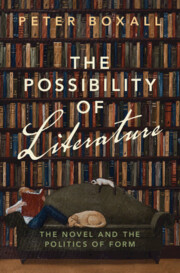Book contents
- The Possibility of Literature
- The Possibility of Literature
- Copyright page
- Dedication
- Epigraph
- Contents
- Figures
- Acknowledgements
- Introduction
- Part I On Writers
- Part II On Literary History
- Chapter 7 The Threshold of Vision
- Chapter 8 The Anatomy of Realism
- Chapter 9 Back Roads
- Chapter 10 Blind Seeing
- Chapter 11 Mere Being
- Part III On the Contemporary
- Notes
- Bibliography
- Index
Chapter 7 - The Threshold of Vision
The Animal Gaze in Beckett, Sebald and Coetzee
from Part II - On Literary History
Published online by Cambridge University Press: 10 October 2024
- The Possibility of Literature
- The Possibility of Literature
- Copyright page
- Dedication
- Epigraph
- Contents
- Figures
- Acknowledgements
- Introduction
- Part I On Writers
- Part II On Literary History
- Chapter 7 The Threshold of Vision
- Chapter 8 The Anatomy of Realism
- Chapter 9 Back Roads
- Chapter 10 Blind Seeing
- Chapter 11 Mere Being
- Part III On the Contemporary
- Notes
- Bibliography
- Index
Summary
What is the threshold that intervenes between one mind and another, across which the act of looking takes place?
This essay addresses this question, in relation to the work of Samuel Beckett, W. G. Sebald and J. M. Coetzee. All three writers are centrally concerned with what I here call the ‘threshold of vision’ – and for all three writers, to think this threshold requires an act of ethical imagination. This is the case for the exchange of any look between one consciousness and another; but for all three writers this exchange becomes particularly charged when it is shared between human and animal. The essay reads the act of looking through this relation between human and nonhuman, to produce a critical account of the politics of shared life, as this exceeds our given taxonomies for imagining consciousness.
- Type
- Chapter
- Information
- The Possibility of LiteratureThe Novel and the Politics of Form, pp. 149 - 168Publisher: Cambridge University PressPrint publication year: 2024

